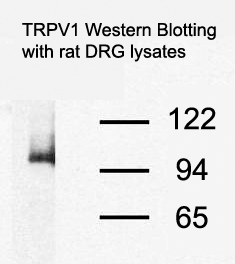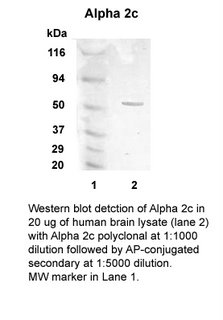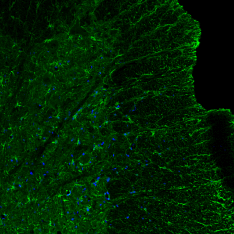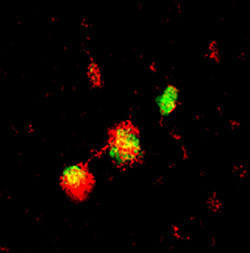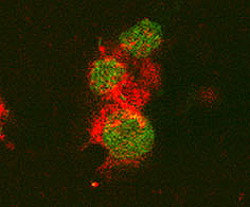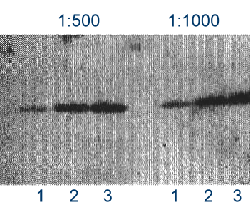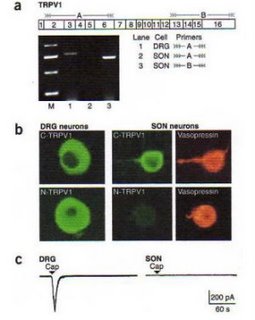Diversity in the Neural Circuitry of Cold Sensing Revealed by Genetic Axonal Labeling of Transient Receptor Potential Melastatin 8 Neurons
CELLULAR/MOLECULAR:Yoshio Takashima, Richard L. Daniels, Wendy Knowlton, James Teng, Emily R. Liman, and David D. McKemyDiversity in the Neural Circuitry of Cold Sensing Revealed by Genetic Axonal Labeling of Transient Receptor Potential Melastatin 8 NeuronsJ. Neurosci., Dec 2007; 27: 14147 - 14157 ; doi:10.1523/JNEUROSCI.4578-07.2007 ......211; Santa Cruz Biotechnology, Santa Cruz, CA), 1:500 rabbit anti-transient receptor potential vanilloid 1 (TRPV1; RA14113; Neuromics, Edina, MN), and 1:500 rabbit anti-TRPM8 (a gift from M. Tominaga, Okazaki Institute for Integrative Bioscience, Okazaki......
AbstractFull TextPDFSupplemental DataG 5 Is Required for Normal Light Responses and Morphology of Retinal ON-Bipolar Cells
BRIEF COMMUNICATIONS:Anjali Rao, Rebecca Dallman, Scott Henderson, and Ching-Kang ChenGβ5 Is Required for Normal Light Responses and Morphology of Retinal ON-Bipolar CellsJ. Neurosci., Dec 2007; 27: 14199 - 14204 ; doi:10.1523/JNEUROSCI.4934-07.2007 ......2003) 1:100 RGS6 Imgenex (San Diego, CA) 1:100 Goalpha Millipore (Billerica, MA) 1:100 mGluR6 Neuromics (Northfield, MN) 1:100 PKCalpha Sigma 1:100 FLAG Sigma 1:100 Transmission electron microscopy......
AbstractFull TextPDFExogenous Delivery of Heat Shock Protein 70 Increases Lifespan in a Mouse Model of Amyotrophic Lateral Sclerosis
NEUROBIOLOGY OF DISEASE:David J. Gifondorwa, Mac B. Robinson, Crystal D. Hayes, Anna R. Taylor, David M. Prevette, Ronald W. Oppenheim, James Caress, and Carolanne E. MilliganExogenous Delivery of Heat Shock Protein 70 Increases Lifespan in a Mouse Model of Amyotrophic Lateral SclerosisJ. Neurosci., Nov 2007; 27: 13173 - 13180 ; doi:10.1523/JNEUROSCI.4057-07.2007 ......overnight, at 4C. The primary antibodies used for glial cell activation were glial fibrillary acidic protein (GFAP; RA22101; Neuromics, Minneapolis, MN) and ionized calcium binding adaptor molecule 1 (Iba1; 016-20001; Wako, Neuss, Germany). The primary antibody......
AbstractFull TextPDFModulation of Semaphorin3A Activity by p75 Neurotrophin Receptor Influences Peripheral Axon Patterning
DEVELOPMENT/PLASTICITY/REPAIR:Ayal Ben-Zvi, Liat Ben-Gigi, Hagit Klein, and Oded BeharModulation of Semaphorin3A Activity by p75 Neurotrophin Receptor Influences Peripheral Axon PatterningJ. Neurosci., Nov 2007; 27: 13000 - 13011 ; doi:10.1523/JNEUROSCI.3373-07.2007 ......domain) used in Western blot analyses was purchased from Alamone Labs (Jerusalem, Israel). Anti-Neuropilin1 was purchased from Neuromics (Edina, MN). Secondary antibodies were obtained from Jackson Immunoresearch Laboratories (Jackson, PA). Protease inhibitor......
AbstractFull TextPDFSupplemental DataSomatostatin Peptides Produce Multiple Effects on Gating Properties of Native Cone Photoreceptor cGMP-Gated Channels That Depend on Circadian Phase and Previous Illumination
CELLULAR/MOLECULAR:Shih-Kuo Chen, Gladys Y.-P. Ko, and Stuart E. DryerSomatostatin Peptides Produce Multiple Effects on Gating Properties of Native Cone Photoreceptor cGMP-Gated Channels That Depend on Circadian Phase and Previous IlluminationJ. Neurosci., Nov 2007; 27: 12168 - 12175 ; doi:10.1523/JNEUROSCI.3541-07.2007 ......into the plasma membrane, and this can be monitored to infer activation of PLC. Transfection was performed using pn-Fect from Neuromics (Edina, MN). Briefly, retinal cells were grown for 4 d in LD cycles, until 24 h before analysis. At that time, coverslips......








 Images: (A) Tyrosine hydroxylase immunohistochemical staining of tibial epineurium from the tarsal tunnel. Positively staining sympathetic fibers (arrows) are seen within a larger nerve bundle. (B) Tyrosine hydroxylase immunohistochemical staining of connective tissue from the tarsal tunnel. Several positively staining sympathetic fibers (arrows) are seen innervating the media of a local venule.
Images: (A) Tyrosine hydroxylase immunohistochemical staining of tibial epineurium from the tarsal tunnel. Positively staining sympathetic fibers (arrows) are seen within a larger nerve bundle. (B) Tyrosine hydroxylase immunohistochemical staining of connective tissue from the tarsal tunnel. Several positively staining sympathetic fibers (arrows) are seen innervating the media of a local venule.














